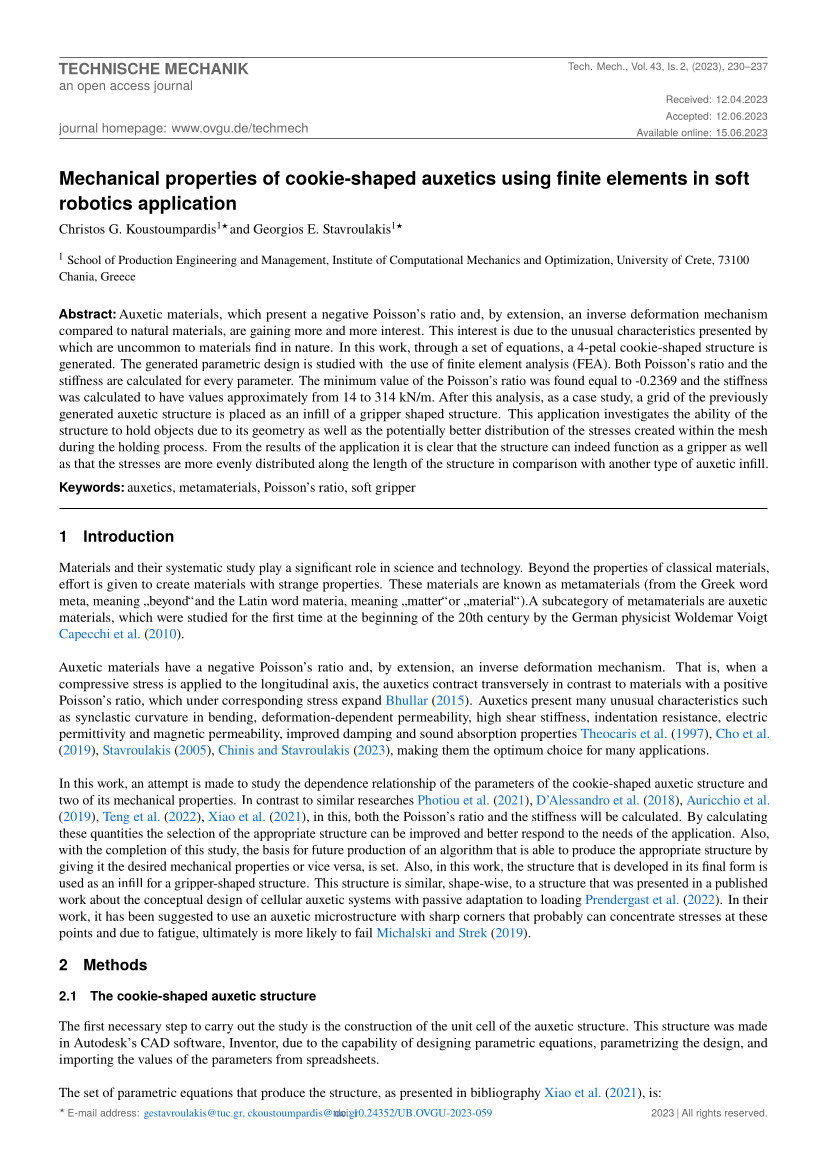Mechanical properties of cookie-shaped auxetics using finite elements and soft robotics appllication
DOI:
https://doi.org/10.24352/UB.OVGU-2023-059Keywords:
auxetics, metamaterials, Posson ratio, soft gripperAbstract
Auxetic materials, which present a negative Poisson ratio and, by extension, an inverse deformation mechanism compared to natural materials, are gaining more and more interest. This interest is due to the unusual characteristics presented by these and are uncommon to natural materials. In this work, through a set of equations, a 4-petal cookie-shaped structure is generated. The generated parametric design is studied with the use of finite element analysis (FEA). Both Poisson's ratio and the stiffness are calculated for every parameter. The minimum value of the Poisson's ratio was found equal to -0.2369 and the stiffness was calculated to have values approximately from 14 to 314 kN/m. After this analysis, as a case study, a grid of the previously generated auxetic structure is placed as an infill of a gripper shaped structure. This application investigates the ability of the structure to hold objects due to its geometry as well as the potentially better distribution of the stresses created within the mesh during the holding process. From the results of the application it is clear that the structure can indeed function as a gripper as well as that the stresses are more evenly distributed along the length of the structure in comparison with another type of auxetic infill.

Downloads
Published
How to Cite
Issue
Section
License
Copyright (c) 2023 Mr Christos-Gerasimos Koustoumpardis, Georgios Stavroulakis

This work is licensed under a Creative Commons Attribution-ShareAlike 4.0 International License.




